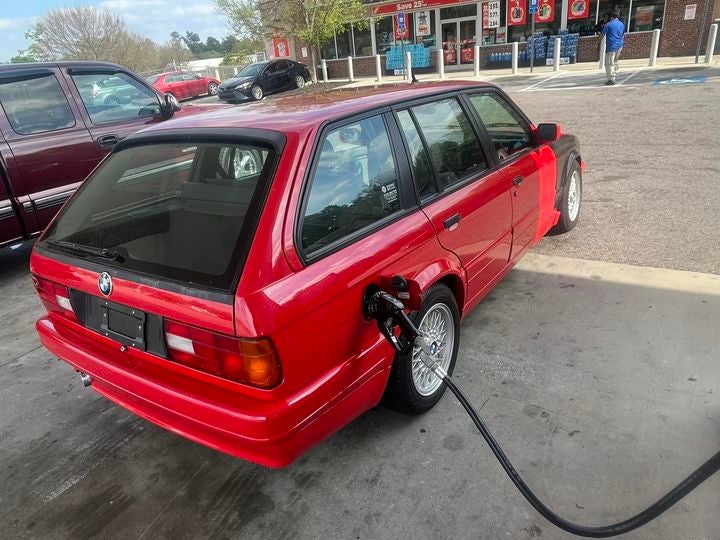This week I finally finished the mechanical work on my new-to-me classic car. About a month ago, I purchased a 1992 BMW 325i Touring from a friend of mine.
The car needed some fairly involved mechanical work, which took some time, but now it is running like a top. As I shifted my focus to clearing up a few other small concerns with the car, it was time to get my paperwork in order to get it “street legal.”
This car is a gray-market car imported from Germany, and none in this configuration were sold here through dealerships in the United States. It was brought over from a member of the armed forces, which means all the heavy lifting of importation, titling, and customs hurdles has already been completed.
I have a title issued by Georgia in the previous owner’s name, so insurance should be a breeze! Right?
Wrong, and for a few reasons.
The biggest reason is that the computer system most insurance companies use will not even recognize the vehicle identification number, or VIN. While some insurance companies will underwrite a gray-market car, my current insurance company will not.
I would need a stand-alone policy for this car, which isn’t a deal breaker to me.
I messaged a longtime Facebook pal of mine that runs an insurance company for advice and was suggested to get a “collector car” policy. After a few questions, I met with a deal breaker on the insurance company’s end.
Did I have a garage?

Many of my readers would be surprised that I am a mechanic, but I don’t have a garage. I park my cars in the driveway, open to the elements, thieves, stray cats, and other hazards.
This is normally too much of a risk for a collector car company to consider and all the companies that he worked with rejected me.
My friend could write a regular policy with one of the big insurance companies that he works with that covers gray-market cars, but it would be a conventional policy. I would have to think that over a bit.
A conventional policy would pay out what they felt the car was worth, a figure normally calculated by NADA or Kelly Blue Book, if the car was deemed a total loss. With the rarity of the parts of this car, even a small accident can be a total loss.
I quickly looked up the calculated values and found that I would get maybe $3,500 from a total loss. A 34-year-old BMW isn’t worth much to them, I suppose. This would not do.
I started to research what my car would be worth when finished. Auction results are a good way to do this. Sites like eBay and Bring a Trailer have features where you can search for auction results.
After some research, I found a car like mine had sold for around $20,250, a far cry from the $3,500 result from the conventional policy. I figured a $20,000 policy would be a good number, but could I find anyone that would agree to that?
I started looking for someone who could write an “agreed worth” policy and didn’t require a garage. I only found ONE company that would underwrite me and decided to get a quote.
They accepted the $20,000 payout for total loss, which is exactly what I was looking for. They did require me to drive the car less than 6,000 miles a year, which is no problem since this is just my weekend car anyway.
With a premium of $1,868 a year, the cost was much higher than I expected. This policy included some extras, like coverage of parts in storage, towing, and even automotive tools in my shed. The true value of this policy is the agreed worth of the car, and knowing that if the worst happens, I will be protected 100 percent.
If you have a collector car, a classic, or even a rare optioned newer car, it is worth your time to call your insurance company and ask what they pay out.
With the way people drive around here accidents can happen at any moment, crushing your dream car and leaving losses that will never be recovered, even if not your fault. It is way better to know before the crash than after.
As for me, I will see you on the road!











